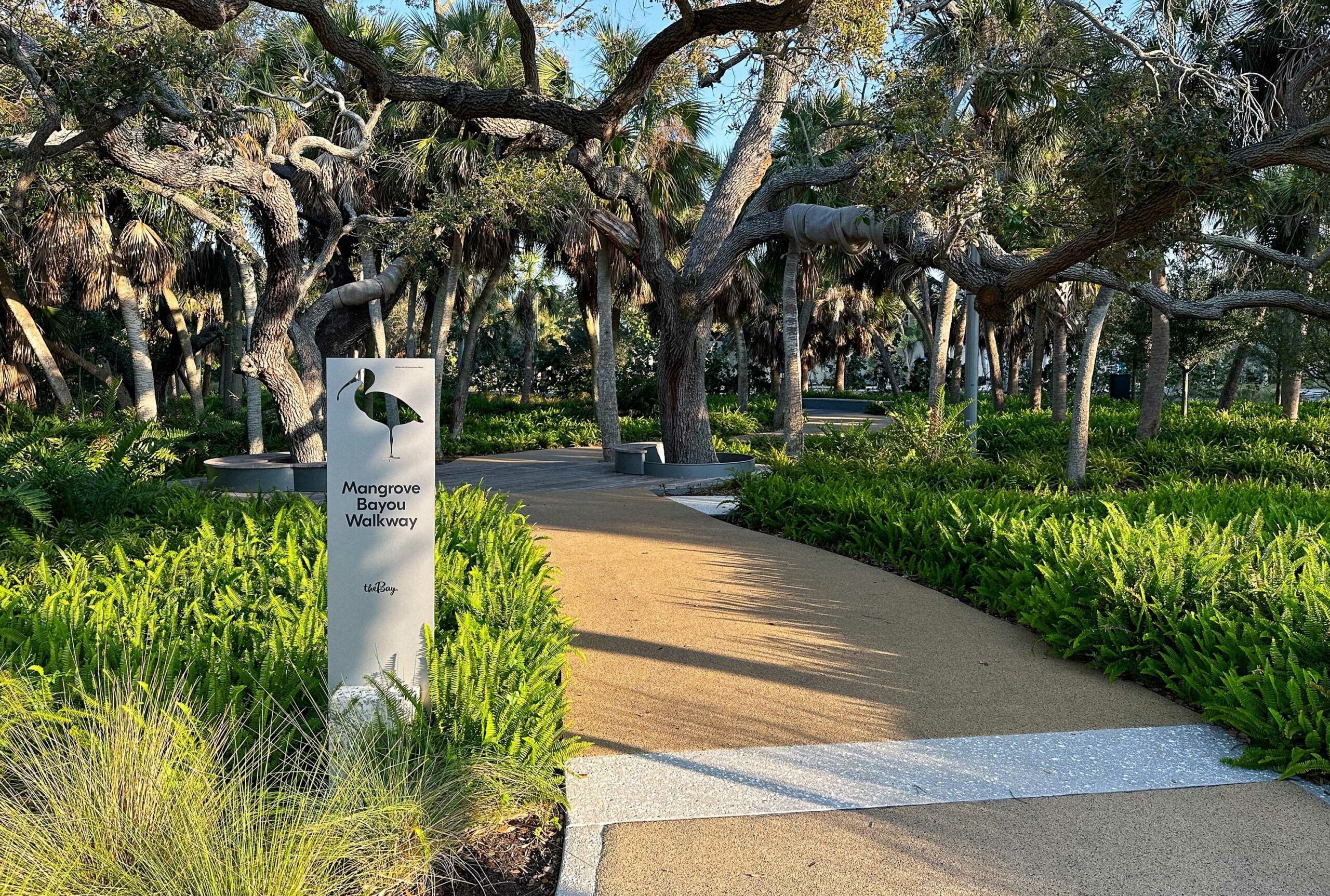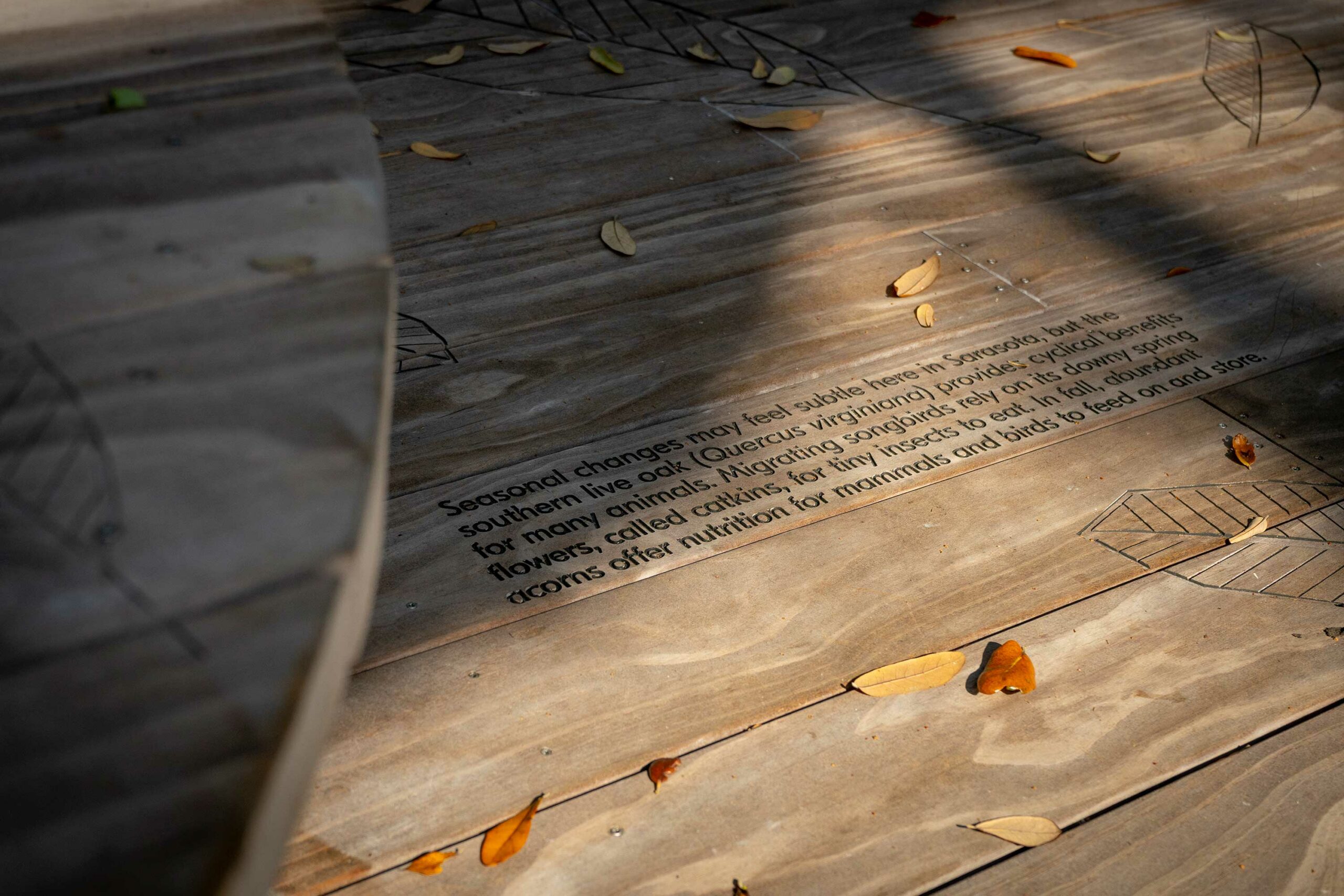
OlmstedNow
Brand Identity, Strategy, Signage & Environmental Graphics, Digital Design

How to experience nature while in nature? Sarasota Bay Park’s newest 10-acre destination is both the city’s front porch—and its wild backyard. To emphasize the connection to the region’s ecology, Ummo worked with the landscape architecture and planning team—as well as with artists, environmentalists, and community members—to bring nature within reach. Using sophisticated, abstracted patterns and a material palette inspired by the coastal environment, Ummo’s environmental design not only orients visitors but heightens the experience of the place.

Interpretive blade signs along pathways cue visitors to the hidden wonders of the site—the ways that bioswales capture rainwater or how scientists track the health of marine animals. Like other elements, the blades strike a balance between blending into their surroundings and beckoning curious visitors. Their height is low so that they don’t compete with the naive landscape; an elegant slim profile ensures they don’t disrupt sightlines; a 30-degree tilt in the sign spares readers from having to bend down.
Etchings on wood planks bring into focus the Bay’s varied ecosystem. Recognizable yet abstracted, the etched flora and fauna subtly reinforce the learning experience. They are a recurring theme throughout the park, appearing on footpaths, bridges, benches, planters, and other places of recreation and rest. When visitors are shaded among stands of trees, they will likely encounter etchings of live oak or wild coffee leaves. As they amble on towards the water, they are greeted by pink shrimp and the thumbnail-sized mangrove tree crab.
“The Bay represents a world class park on Sarasota Bay, offering a gathering place that will bring our community together and provide one park for all”
Even donor signage serves multiple purposes. In addition to acknowledging the generosity of funders, the design features species of local birds and insects. Cut out in silhouette, these images simultaneously introduce visitors to various species while allowing the landscape to show through the negative space.













Signage and wayfinding for The Bay Park – Phase 1
Agency Landscape + Planning, Sasaki, The Bay Park Conservancy
Photography by HAPS Agency
Pink shrimp (Farfantepenaeus duorarum) are found from the Chesapeake Bay to the Florida Keys and around the Gulf of Mexico. Their name comes from their color when cooked, suggesting the species’ commercial importance. Juveniles spend their time in brackish estuaries like this one, so a healthy Sarasota Bay means more pink shrimp.